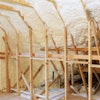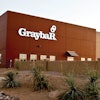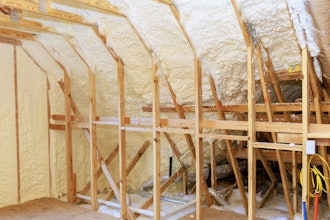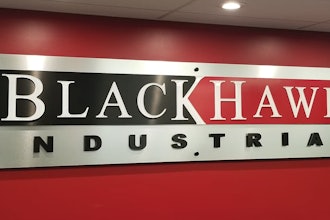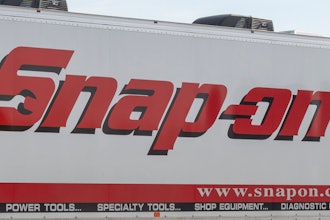|
Kenneth R. Foster is a metals industry specialist with SKF USA Inc., provider of rolling bearings, seals, mechatronics, reliability services, and lubrication systems for the manufacturing marketplace. |
What basic roles do rolling bearings play in machinery and what problems can occur when replacing them?
Rolling bearings, whether ball or roller types, serve to support shafts, locate loads, enable rotation, and reduce friction in rotating machinery. When these precision components need to be replaced, care must be taken to avoid potential damage. In the case of dismounting a bearing, the reality is that the task can be hazardous and demanding, often involving powerful forces. No matter how tempting, welding torches or hammer blows are strongly discouraged. These approaches may be quick, but they can be dangerous, risk damage to machinery shafts, and make subsequent failure analysis of a bearing either difficult or impossible. And, when a bearing is being mounted, a poor fit, brute installation force, or incorrect tools can result in premature bearing failure.
What technologies have been developed for dismounting a bearing properly?
Almost universally for most bearing designs, pullers have become preferred tools. Choosing the right type of puller offering the necessary maximum withdrawal force will be critical. Puller selection should allow for sufficient pulling force to help prevent puller overload, because overloading a puller can result in puller arm or beam breakage and subsequent injury to the operator. As examples among the many types of available pullers, two- or three-arm jaw versions allow for even pulling pressure and are engineered to prevent damage to the bearing or the bearing seating during dismounting; combined internal and external pullers can grip both the outside and inside of a component with equal strength; and heavy-duty jaw types provide ideal alignment and shaft protection, as well as a superior grip to dismount medium- to large-size bearings. Hydraulic or hydraulically assisted versions of these pullers will additionally deliver the benefits of effortless force generation. Considerable removal assistance can be achieved by hydraulically porting the shafts on which the bearings are mounted. This enables one to pump hydraulic fluid under the bearing seats. This technique will add a little lubricity between the bearing and shaft, lessen the interference fit by slightly expanding the inner ring, and result in an easier "pull" to remove the bearing.
When mounting a new bearing, what are the first considerations and what methods are recommended?
Before the effort gets under way, it should be confirmed that the new bearing is identical to the one being replaced in bearing type, bore size, outside diameter, width, and any other special requirements. In addition, the machine's housing and shaft should be clean, undamaged, and dimensionally accurate; the lubricant to be used should be clean and of the correct specification for the application; and the necessary tools should be at hand. The primary traditional mounting methods are commonly called "cold" or "hot" consistent with their enabling technologies. Cold mounting generally is recommended for bearings with outside diameters up to 4 inches, while hot mounting is usually applied to larger bearings. Tools have been developed to suit each approach.
How is cold mounting performed for the smaller bearings?
Force is applied to the bearing by placing a fitting tool, impact ring, and sleeve against the bearing ring face having the interference fit and using a press or similar device to advance the bearing evenly to its proper location on the shaft. Before proceeding, the bearing should be positioned exactly at right angles to the shaft and the shaft should be lightly lubricated with thin oil. The force required for mounting a bearing increases with bearing size. Because of this need for greater force, larger bearings cannot easily be pressed onto a shaft or into a housing. In these cases, hot mounting provides a solution.
How does hot mounting work for the larger bearings and how critical is the temperature factor?
The bearing is pre-heated to allow for expansion and easier installation, while maintaining specified interference fit when the job is completed. Using the hot mounting process the temperature difference between the bearing and seating will depend on the magnitude of the interference fit and the bearing size. Normally, a bearing temperature of 80 to 90 degrees C (144 to 162 degrees F) above that of the shaft is sufficient. Unless otherwise specified, bearings should never be heated to a temperature greater than 125 degrees C (257 degrees F); heating limits may apply to sealed/shielded or other pre-lubricated bearings. Extreme heat can cause the bearing's metallurgy to change, which can alter bearing dimensions or hardness. Localized overheating of a bearing should always be avoided. In particular, a bearing should never be heated using an open flame, such as a welding torch, which can risk bearing damage from lack of uniform heating and temperature control, and present fire and health hazards.
What technologies can enable effective hot mounting?
Reliable and safe hot mounting can be accomplished using specialized bearing heaters, which heat only the bearing. Versions include induction heaters, ovens, electric hot plates, and new generations incorporating three different heaters and specialized design to reduce heating time, power consumption, and associated costs. It should be noted, though, that induction heaters produce an electric current, which magnetizes the bearing. The bearing must be demagnetized to prevent the attraction of metal particles and potential contamination leading to premature failure. This can be accomplished easily using an induction heater that will automatically demagnetize the bearing at the end of the heating cycle. Such heaters can be supplied by experienced manufacturers, who also can additionally serve as expert resources in all matters should bearings need to be replaced.

